Sam Holland is the Chair of Better Transit YYJ
Key Facts
- Existing transit ridership already exceeds 2038 ridership estimates from 2011 along Douglas St (1600 passengers per hour per direction).
- Updated projected traffic demand (without rail) would turn Highway 1 into a parking lot between 5am and 7pm by 2050.
- Significant changes to the 2011 plan are required, particularly on Goldstream Avenue and surrounding the McKenzie interchange.
Without any fanfare or announcement, the BC Ministry of Transportation and Transit, quietly released a technical review of a proposed rail corridor linking Downtown Victoria to the Westshore via Uptown.
The report reconsiders the rail corridor identified in the 2011 Rapid Transit study, in light of rapid population growth in Langford and Colwood and the addition of bus lanes and the McKenzie interchange on Highway 1. The review, written by consultancy Urban Systems, highlights that the 2011 study underestimated the scale of transit ridership growth and overall traffic increases.
“This review builds a fantastic case for revisiting Westshore rail, but it’s already out of date a month off the press” says Better Transit YYJ spokesperson Caleb Crookes. “Ridership is rapidly increasing every year between Downtown and the Westshore and this review was based on 2023 numbers. These kinds of studies and reviews always underestimate future ridership. We don’t want to build something that is overcapacity on day one or worse yet, something that isn’t time-competitive with driving. That’s why we need to be considering something bigger and better than an at-grade tram.”
Current 95 ridership is north of 11k daily, pushing it into the top 15 routes in BC.
Rail to the Westshore has been a hot topic over recent months, as repeated serious crashes have gridlocked down the two roads linking the Westshore to the Core. The CRD Board will vote on a letter to senior government in January, asking to collaborate on the creation of a new rail study for Westshore rail.
What did the 2011 report consider?
The 2011 rapid transit report assessed three scenarios: Bus Rapid Transit, Light Rail Transit, and business-as-usual. All scenarios considered the same alignment, following Douglas St to Uptown, and Highway 1 and Goldstream Avenue to Colwood Corners and Langford Centre.
Other modes of transport, such as a light metro, were discarded, despite recognition that at-grade light rail would not provide competitive travel times to motor vehicles outside of peak travel times.
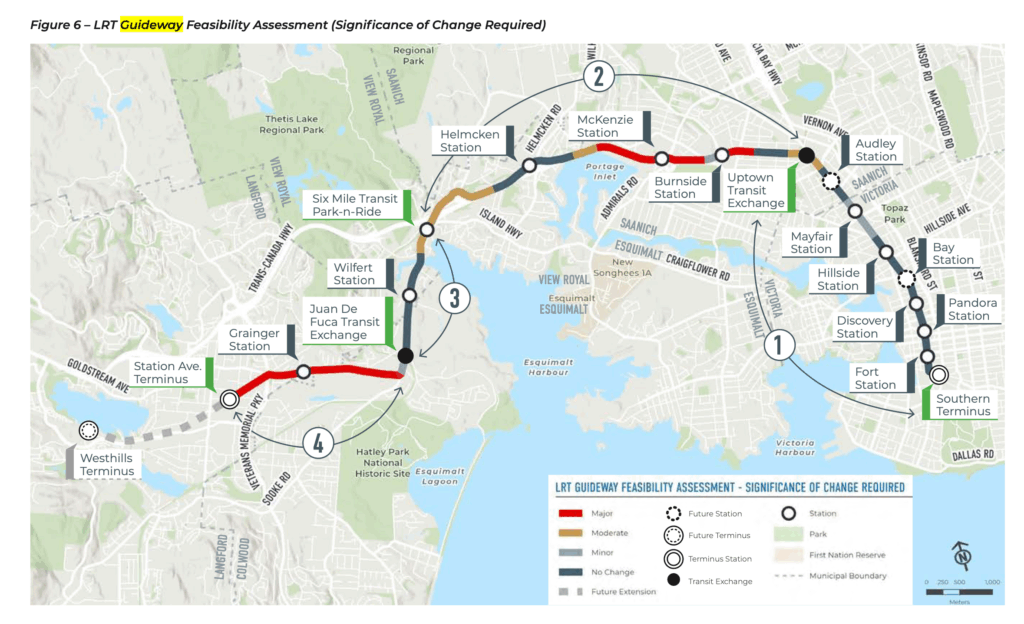
The 2011 report concluded that Light Rail Transit would provide the most benefit, and recommended that the region receive a light rail line. While the Liberals punted for years, the Horgan government semi-permanently put rail to bed, with Horgan saying that trains were not the solution to moving Victoria commuters.
14 years on, the region has neither bus rapid transit nor a working rail line.
2050: All-day gridlock
The study update shows that current traffic on Highway 1 already exceeds road capacity, eastbound in the morning and westbound in the afternoon, a situation familiar to anyone who has tried to commute in the ‘Colwood Crawl’.
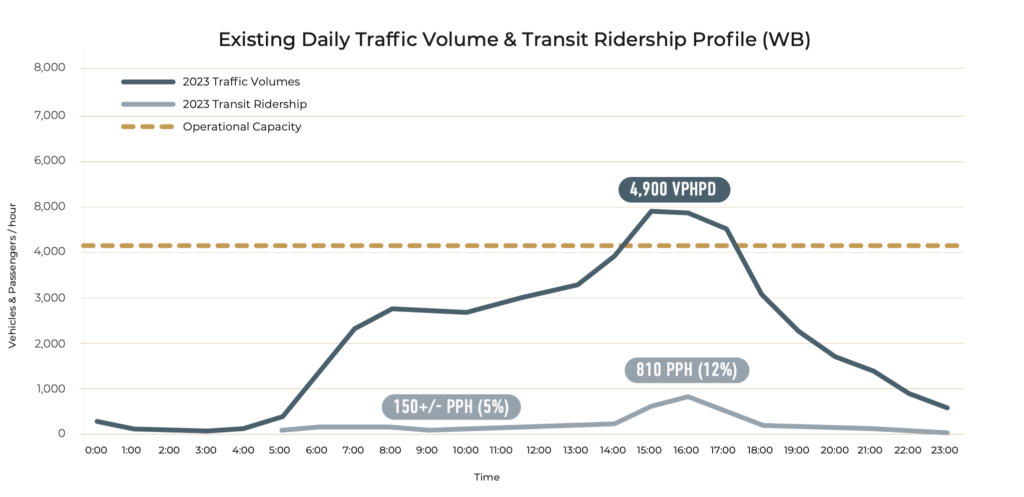
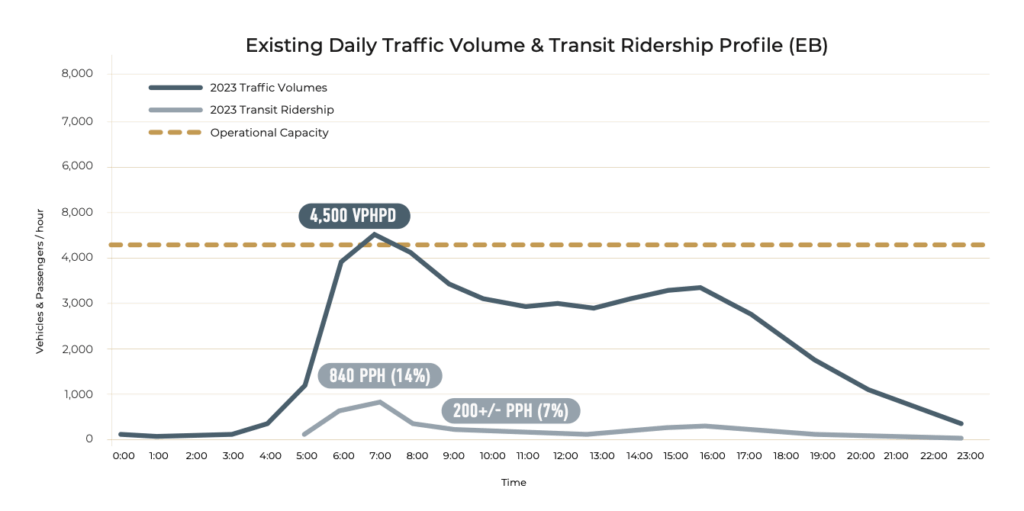
This traffic already drives a strong desire in the Westshore for better transit, and is pushing thousands of people to use the 95 RapidBus, the route which currently goes from Langford to Downtown Victoria via Uptown.
However, by 2050, Urban System’s demand projections predict that Highway 1 will be overwhelmed almost all day, from 5am to 5pm eastbound, and 7am to 7pm westbound.
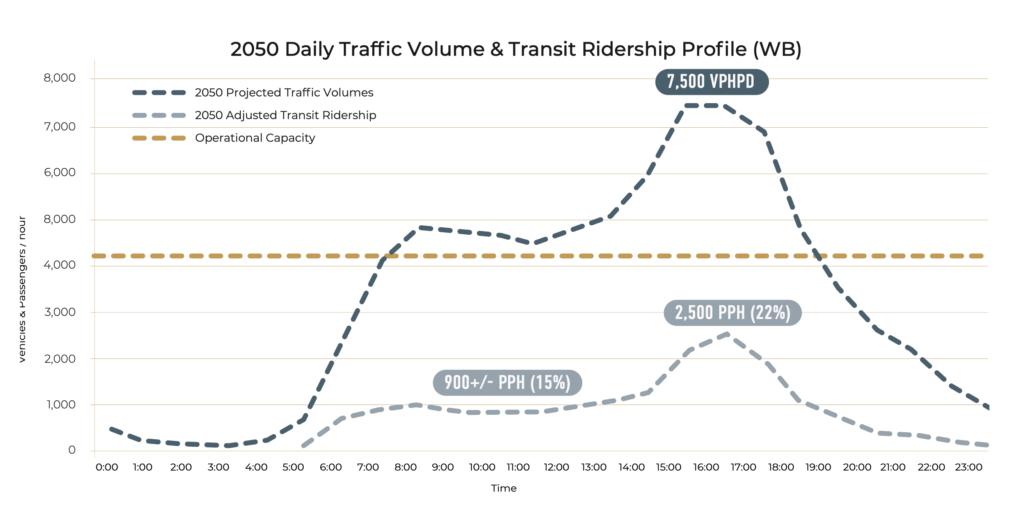
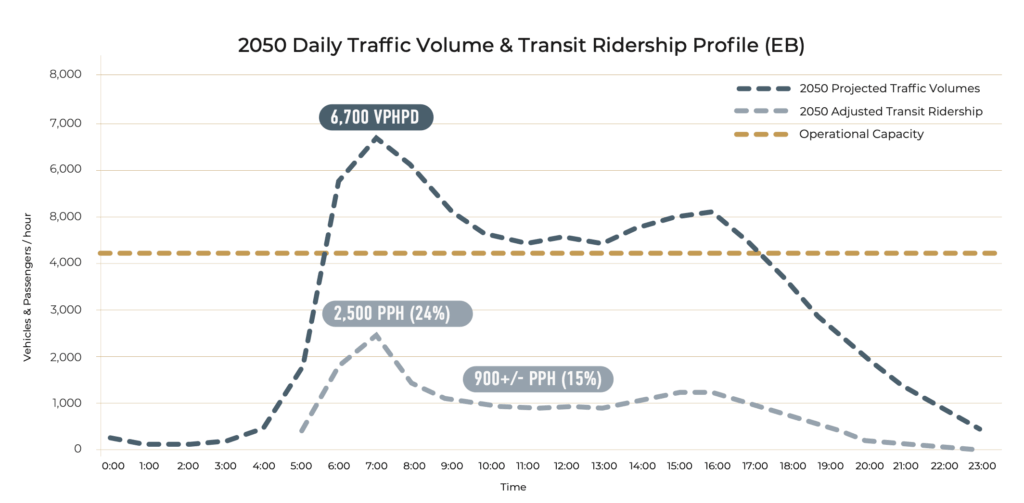
This in turn would drive a rapid increase in transit ridership, with or without rail.
Today, approximately 1,500 to 1,600 passengers per hour ride transit along the south sections of Douglas Street. Further west along Highway 1 and Island Highway, transit serves approximately 700 to 900 passengers per hour. As a result of severe all-day traffic the report projects a 300% increase in transit ridership.
This would exceed the capacity that BC Transit can handle with regular busses, at least according to the 2011 report.

2011 population estimates dramatically undershot, and the 2025 update shows ridership that reflects this. Current estimates show 6% higher population and 13% higher employment for 2038 than previously estimated (478,000 people and 261,100 jobs respectively). By 2038 the Westshore will likely contain 26% of the region’s population.
What comes next?
The 2025 update is very limited. It only asks if the 2011 alignment still works, and if land use, travel patterns, and population increases still make a good case for rail.
The answer is that we need to build higher order transit or we will be completely screwed (transportation-wise) in under 25 years.
This update does not ask several important questions:
- How much would rail cost with current infrastructure costs?
- Should we (re)consider higher order transit such as a light metro or automated LRT? How much would that cost?
- Does all of the proposed alignment still make sense, with our uneven population growth?
- What measures could we take to lower the possible cost of this project?
These questions will have to be asked and answered in a future report or study.
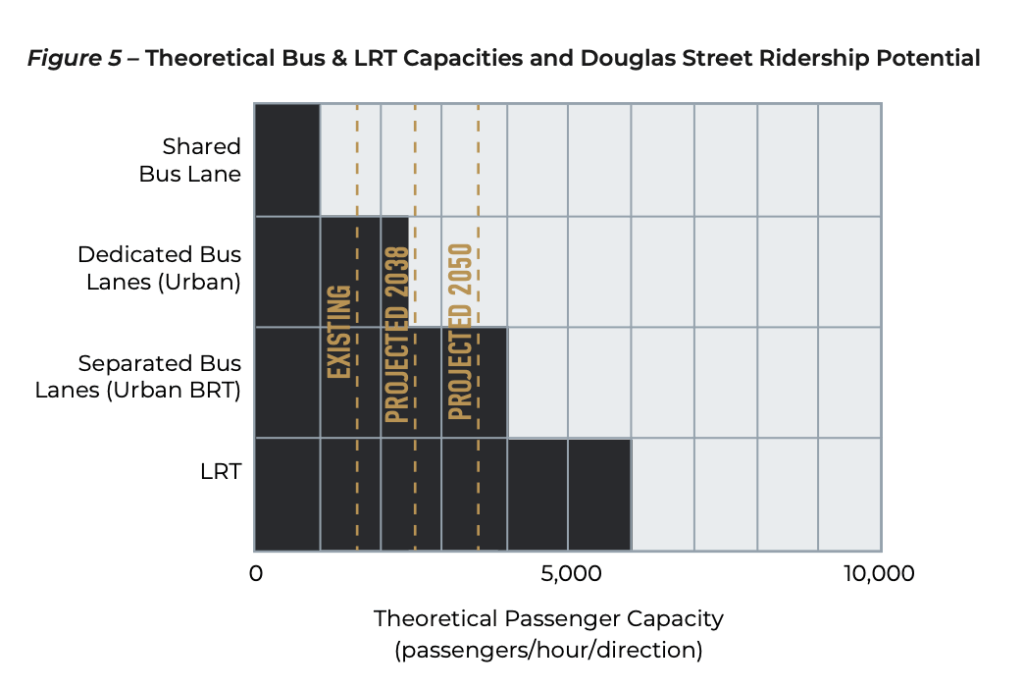
Note: an earlier version of this article stated that the 95 is in the top 10 of bus routes by ridership provincially. That is true on weekends but overall it is in the top 15.

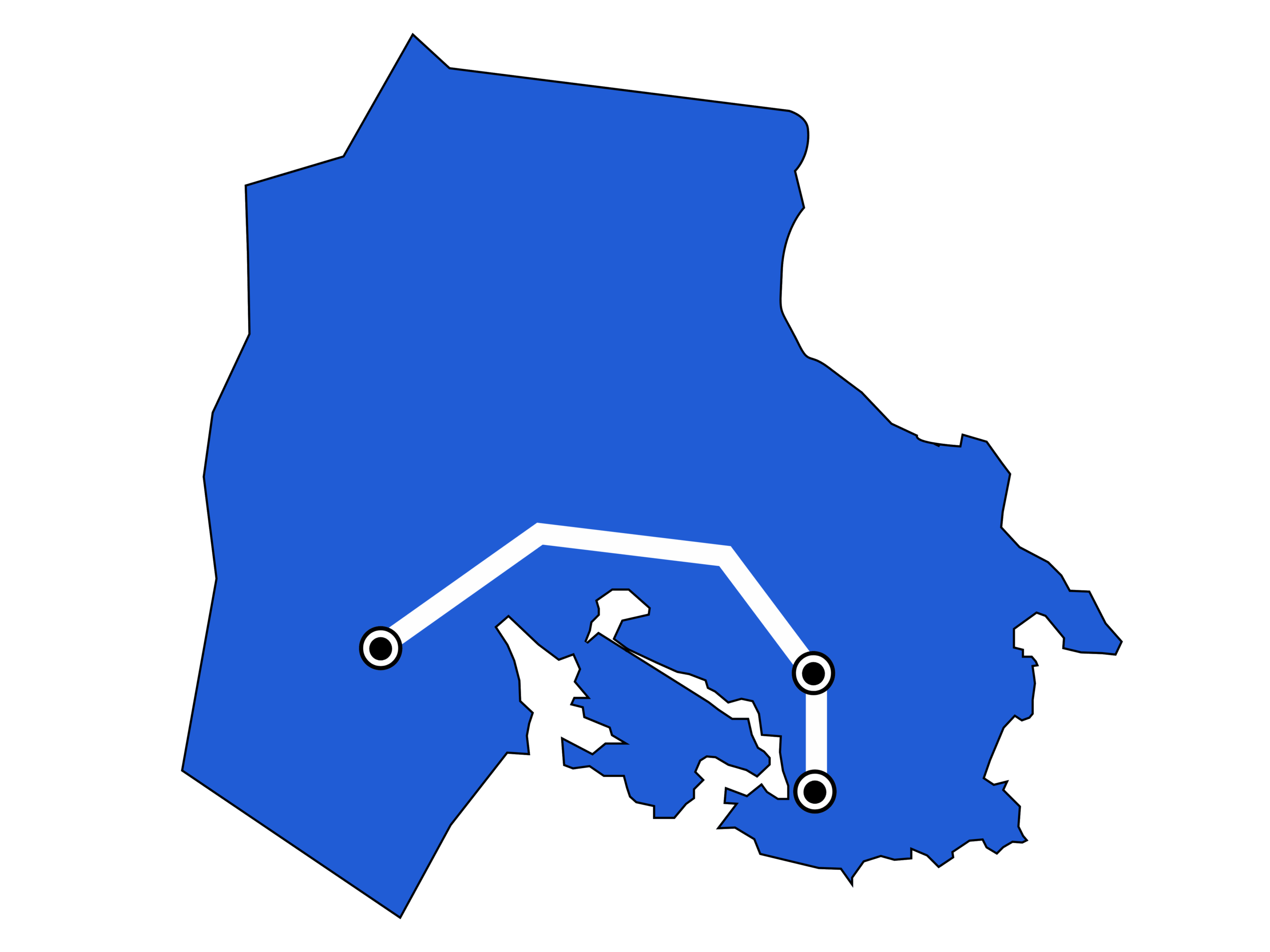
Leave a Reply